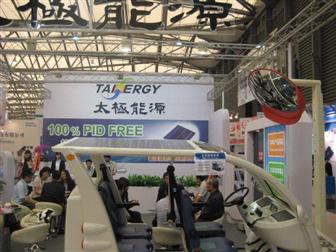Demand for solar cells with higher conversion efficiency has been rising causing various types of technologies to be taken notice by the industry.The solar industry continues to strive for highest returns with lowest production costs and this ideology has been embedded in the search of better and newer technologies.
The solar market has been experiencing oversupply for quite some time and dominance has been shifting from suppliers to buyers.The most obvious example is the rising demand for higher conversion efficiency of solar cells since second-quarter 2011.
Cost,cost,cost
Technological improvements are important but they have not appeared on the market as much as expected.This is due to the fact that most solar firms have been operating with losses and do not have extra cash to invest in new technologies.
According to R&D experts in the solar industry,the most important thing about new technologies for business people is cost per watt.Firms need to know the exact cost of obtaining certain levels of efficiency.In addition,businesses like to know what kind of returns they can obtain once the new technology has been incepted into products.As solar cell prices on the market are still higher than the production costs of many firms,these firm are complacent about their current products without seeing the need to introduce new technologies.
In addition,with solar players eager to play the low-cost game,some new technologies that would command higher prices have not been standing many chances of being commercialized.
Furthermore,it may be most cost effective to adopt new manufacturing processes for the existing technologies to improve efficiency rather than adopt entirely new technologies.
Two approaches to increasing efficiency
There are two major approaches to increase conversion efficiency of solar cells.One is to make partial adjustments to the existing technology to achieve higher efficiency.Technologies such as double printing,selective emitter(SE),emitter wrap through(EWT),and metal wrap through(MWT)belong to this.Mono-crystalline,multi-crystalline,or mainstream P-and N-type of solar products can improve conversion efficiency through such processes.
The second way involves technology regarding mono-crystalline N-type solar cells.Technologies such as interdigitated back contact(IBC)dominated by US-based Sunpower(also invested by AU Optronics)and heterojunction with intrinsic thin layer(HIT)dominated by Sanyo,a subsidiary of Japan-based Panasonic,are examples of innovative process of increasing conversion efficiency of mono-crystalline N-type solar cells.
IBC has more than 20 steps,hence has been accepted more by the semiconductor sector rather than solar firms due to higher cost and complexity.Many solar firms do not have the equipment,financial capital,and expertise to adopt the technology.
The HIT process involves less steps than IBC and incur less costs.Despite the fact that Panasonic's patent for this technology has expired,few firms have the ability to replace Panasonic and dominate this process.
The new processes mentioned above and the current dominating ones are different in technologies,basic manufactruing structures,and materials.Therefore,once the new technologies can effectively lower costs to a certain level,a technological revolution could happen.This is because with the new technologies,conversion efficiency can be increased above 20%,much higher than mainstream polysilicon solar cells with average conversion efficiency at 16.8-17%and mono-crystalline solar cells with conversion efficiency at 18.4%.The mainstream solar products will likely meet efficiency bottleneck soon.
Would you like paste with that?
In addition to new technologies,solar cell makers have been using advanced conductive pastes to increase solar cell efficiencies.
Industry sources noted that this new type of conductive pastes work in a process similar to the SE process.Solar cell makers normally need to create two types of impurity concentration.The areas that have low impurity concentration are used to increase the flow of electricity while the areas with high impurity concentration are used to lower resistance.The new conductive paste allows solar cell makers to use solar wafers with low impurity concentration and leave the problems of resistance to the pastes.This can effectively replace the SE process.
Conductive paste makers such as DuPont,Heraeus,and Giga Solar have been engaging in heated competition.The mainstream products are still silver and silver aluminum pastes dominated by international brands.Nevertheless,firms that produce other types of conductive pastes have been aggressive in developing new products to turn the tide.
Some solar firms believe the recent increasing popularity of conductive pastes is due to weak market conditions causing firms to increase efficiency by using different pastes rather than buying new equipment.
Incomprehensive supply chain
With economies of scale,Taiwan-based solar cell makers have the ability to buy new equipment and adopt new technologies such as MWT to increase efficiency of solar cells.Nevertheless,the most urgent problem the firms have to face now is limited distribution channels.
Comparatively,China-based solar firms are in a better position to buy new equipment and improve production processes because of its strong solar module industry.This allows the solar cell makers to perform massive production and achieve economies of scale to lower the costs of adopting new technologies.
Backside passivation is currently the best choice for Taiwan-based solar cell makers because it allows solar module firms to continue its current welding technology when doing assembly.
Taiwaneseness
Most Taiwan-based firms have been developing new technologies using idle capacities.Hence technological developments are often delayed during boom times.
Also,Taiwan-based firms have not been brave enough to invest large amounts of capital in R&D for new technologies that can possibly help them differentiate their products and prevent them from engaging in price competitions.
It seems to be the norm for Taiwan-based firms to wait until someone else incepts new technologies for others to follow suit.No one wants to be a pioneer in Taiwan.This risk-avoiding characteristic is likely to prevent Taiwan's industry growing and taking the game to new playing fields.






